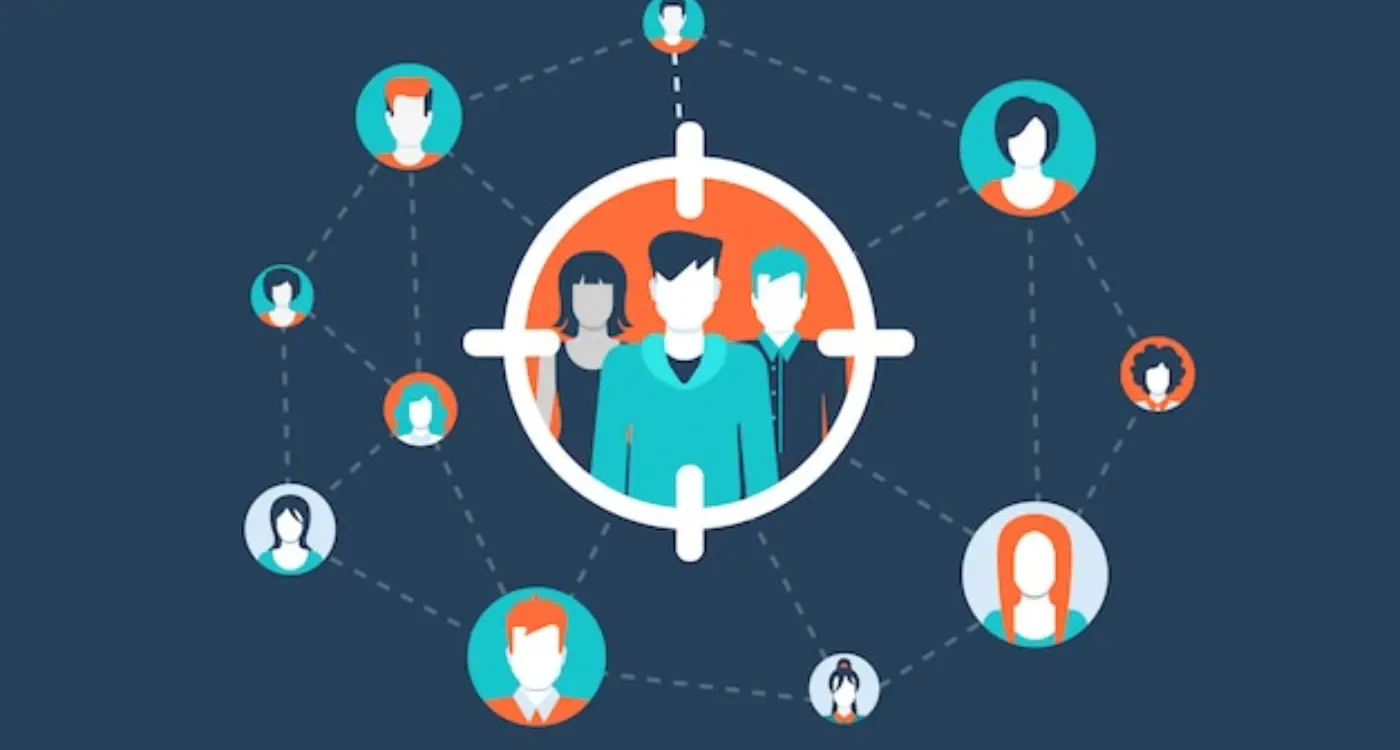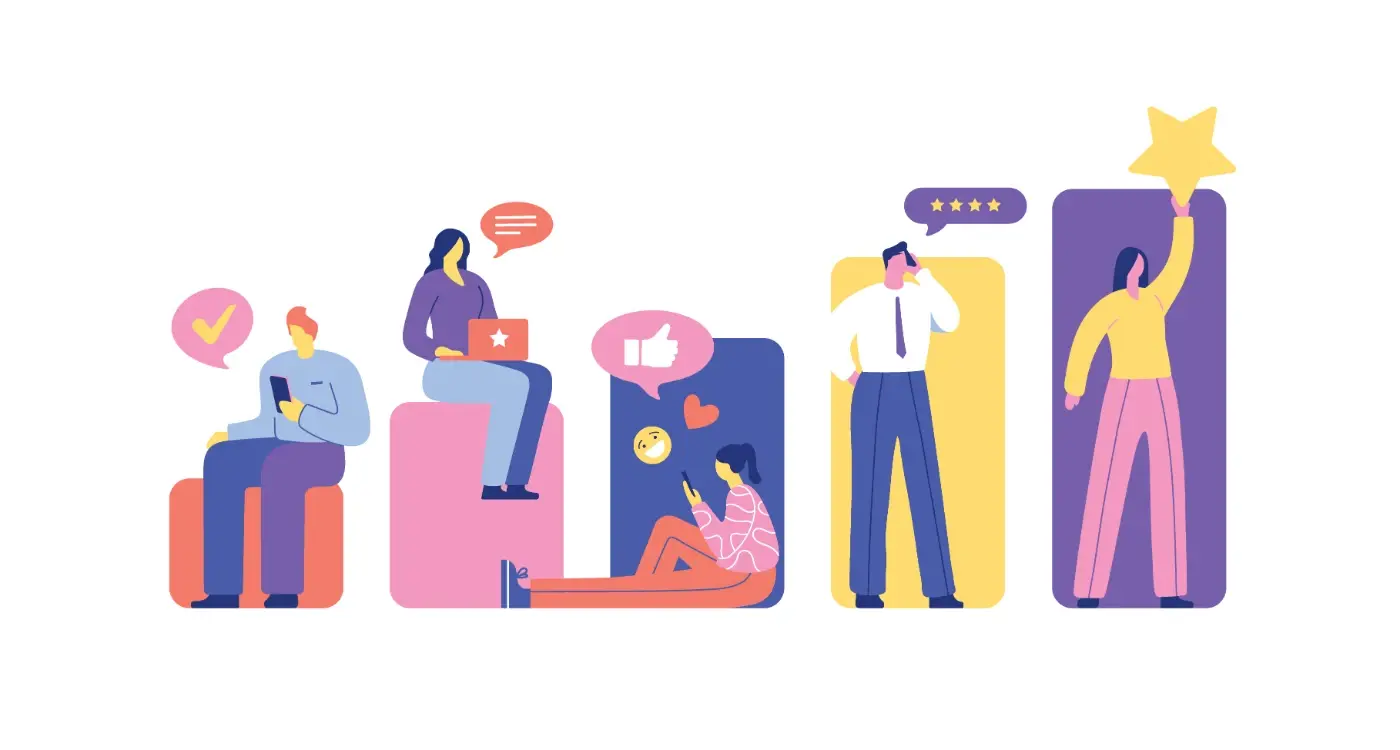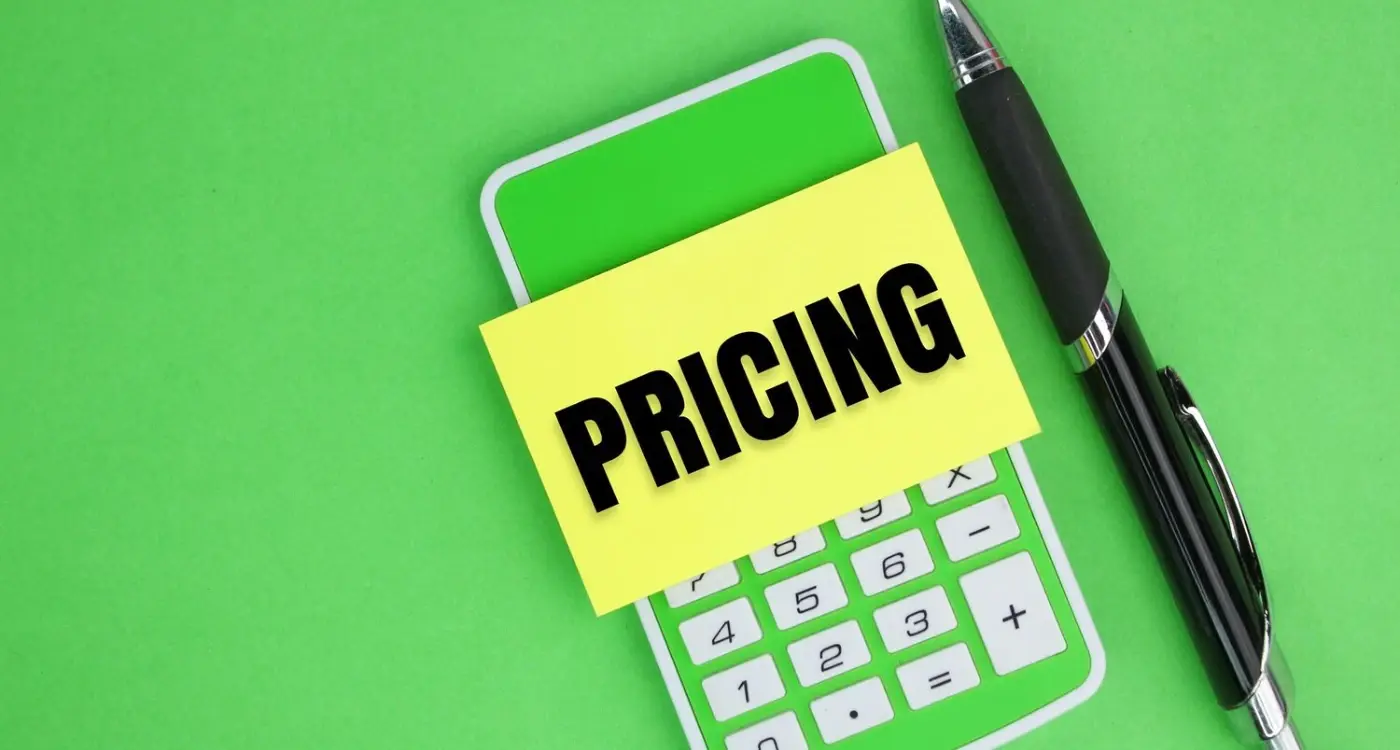How Do I Research Users Who Don't Use Apps Like Mine Yet?
Most app developers spend all their time talking to people who already use their app or similar apps. Makes sense, right? These users can tell you what's broken, what they love, and what features they want next. But here's the thing—you're only hearing from people who already decided your type of app was worth downloading. What about everyone else?
There's a massive group of potential users out there who have never touched an app like yours. Maybe they don't even know apps like yours exist. Or perhaps they tried something similar once, hated it, and swore off the whole category. These people represent your biggest opportunity for growth, but they're also the hardest to find and understand.
I've seen too many apps fail because they only listened to their existing users. Sure, those users loved the app, but the app never grew beyond that initial group. The developers kept adding features that made sense to current users but made the app more confusing for newcomers. They optimised for retention but forgot about acquisition entirely.
The most successful apps I've built grew by understanding why people weren't using them, not just why people were
Non-user research is about stepping outside your comfort zone and talking to people who might seem completely uninterested in what you're building. It's about understanding the barriers, fears, and alternative solutions that keep potential users away from your app. This kind of research can uncover insights that completely change how you think about your product—and more importantly, how you talk about it to the world.
Understanding Non-Users vs Current Users
Right, let's get something straight from the start—there's a massive difference between talking to people who already use apps like yours and researching those who don't. I mean, it sounds obvious when I put it like that, but you'd be shocked how many clients come to me with user research that's completely skewed towards existing users.
Current users have already made peace with your app concept. They've downloaded it, figured out the basics, and stuck around long enough to have opinions. But non-users? They're operating from a completely different headspace. They might not even understand why they'd need your app in the first place.
Why Non-User Research Matters More Than You Think
Here's the thing—your biggest growth opportunity isn't making current users slightly happier. It's convincing the masses of people who've never even considered downloading your app. These folks represent your real market potential, but they're also the hardest group to understand because they're not actively thinking about your problem space.
When I'm working on app projects, I always push clients to spend at least 60% of their research time on non-users. Current users will tell you how to make incremental improvements, but non-users will tell you why your app isn't spreading like wildfire. This principle applies whether you're researching users or assessing developer capabilities during the hiring process.
The Key Differences You Need to Know
- Current users speak your language—non-users don't know your terminology yet
- Existing users have already justified the download—non-users haven't seen the value
- Current users focus on features—non-users question the entire premise
- Regular users have formed habits—non-users are starting from zero motivation
- Active users forgive minor issues—non-users will abandon at the first hurdle
The research methods you'll use for each group are completely different too. With current users, you can run surveys and ask direct questions. With non-users, you need to be much more subtle and observational because they often can't articulate needs they don't know they have.
Finding People Who Don't Know Your App Exists
Right, so you've got an app idea or maybe you're already building something—but how do you find the people who don't even know they need what you're creating? This is where most app developers get it wrong, actually. They spend ages talking to people who already use similar apps instead of finding the folks who are completely unaware that solutions like theirs exist.
The trick is getting out of your usual circles. I mean, if you're building a fitness tracking app, don't just hang around gyms and running clubs. Those people already know about fitness apps! Instead, look for people who are struggling with health goals but haven't thought about using technology to help them. You might find them in places like community centres, workplace wellness programmes, or even local Facebook groups where people share their daily struggles.
Social media listening is bloody useful for this kind of research. Search for phrases like "I wish there was a way to..." or "why is it so hard to..." followed by keywords related to your app's purpose. People constantly complain about problems on Twitter, Reddit, and Facebook without realising there might be an app for that. These complaints are pure gold for understanding unmet needs.
Set up Google Alerts for problem-focused keywords related to your app category. You'll get daily emails when people mention these issues online, giving you direct insight into unaware potential users.
Where to Find Unaware Users
- Community forums and local Facebook groups
- Industry-adjacent events and meetups
- Customer service channels of related businesses
- Online complaint boards and review sites
- Survey platforms targeting broader demographics
The key thing to remember is that these people might not even think their problem needs a digital solution. They're managing somehow, probably with workarounds that seem normal to them but would horrify you as an app developer. That's exactly why their perspective is so valuable for market research.
Talking to People Who Tried Similar Apps and Stopped
Here's something I've learned after years of building apps—the people who tried similar apps and gave up are absolute gold mines of information. They're not hypothetical users; they actually took the time to download something, tried it out, and then decided it wasn't worth keeping on their phone. That's proper real-world feedback right there.
Finding these people isn't as hard as you might think. Start with app store reviews, especially the 1-3 star ones on your competitors' apps. I know it feels a bit like spying, but this is public information and its incredibly useful. Look for reviews that say things like "tried it for a week but went back to my old way" or "good idea but too complicated." These people are telling you exactly why they bounced.
Social media groups are another brilliant place to find lapsed users. Search for posts where people ask "has anyone tried [competitor app]?" The responses often include people saying "yeah, didn't work for me because..." That's your target audience right there.
What to Ask When You Find Them
When you do connect with someone who tried and stopped using a similar app, don't just ask why they quit—that's only half the story. Ask what they were hoping it would do, what their first week looked like, and what they use now instead. Sometimes the reason they stopped isn't because the app was bad; it might be because their needs changed or they found a simpler solution.
I've found that people who tried and stopped are usually more honest than current users. They have no loyalty to protect and they're not trying to justify their decision to keep using something. They'll tell you straight up what didn't work, and that honesty is worth its weight in downloads.
Researching People Who Use Alternative Solutions
This is where things get really interesting—and honestly, where most app developers miss a massive opportunity. Instead of just looking at direct competitors, you need to understand what people are doing right now to solve the problem your app addresses. It's a bit mad really, but some of the best insights come from studying solutions that aren't even digital.
Let me give you an example. If you're building a meal planning app, don't just look at other meal planning apps. Look at people who use Pinterest boards for recipes, those who still write shopping lists on paper, or folks who meal prep using spreadsheets. These alternative solutions tell you something your direct competitors can't—they show you the actual behaviour patterns and preferences of real people solving real problems.
Finding These Alternative Solution Users
Start with social media groups and forums where people discuss the broader problem, not just app solutions. Facebook groups about budgeting (not budgeting apps), Reddit threads about productivity hacks, or LinkedIn discussions about business challenges. You'll find people sharing their workarounds, complaining about current solutions, and revealing what they actually value most.
The most successful apps don't just replace existing solutions—they bridge the gap between what people are already doing and what they wish they could do
Pay attention to the language they use. When someone says they "just use a notebook because it's simpler," that's not laziness—that's a clear signal about what they value. When they mention using three different tools to get one job done, you've found a potential user who's ready for a better solution. These insights from alternative solution users often reveal the biggest opportunities for your app's positioning and features.
Understanding Why Some People Avoid Apps Altogether
Right, let's talk about the people who just won't download apps—and I mean any apps, not just yours. These folks exist in bigger numbers than you might think, and understanding their reasons can actually help you design better experiences for everyone.
I've met people who have maybe three apps on their phone: the ones that came with it. They're not being difficult or stubborn; they genuinely have concerns that we developers often overlook. Privacy worries top the list—they've heard horror stories about apps collecting personal data and selling it on. Storage space is another big one, especially for people with older phones who can't just delete photos to make room.
Then there's the complexity factor. Some people find app stores confusing or worry about accidentally paying for something. Others have had bad experiences with apps that didn't work properly or were hard to uninstall. It's a bit mad really, but these concerns are completely valid from their perspective.
The Main Barriers to App Adoption
- Privacy and data security concerns
- Limited storage space on older devices
- Confusion about how to download or manage apps
- Previous bad experiences with buggy or intrusive apps
- Preference for web browsers over dedicated apps
- Worry about ongoing costs or subscription fees
What's interesting is that many app-avoiders still use mobile websites quite happily. They've found workarounds that meet their needs without the commitment of installing something permanently. If you're trying to reach these users, your mobile web experience better be spot on—because for them, it's not a backup option, it's their primary way of engaging with your service.
Actually, studying app-avoiders has made me rethink how we approach onboarding and permissions. When you understand their concerns, you start building apps that feel less invasive and more trustworthy right from the start.
Testing Your Ideas with Complete Beginners
Testing with complete beginners is where the magic happens—and where most app ideas crash and burn, honestly. I've watched brilliant developers spend months perfecting features that make perfect sense to them, only to watch a complete beginner stare at their app in total confusion. It's a bit mad really, how different our perspective becomes once we've lived with an idea for months.
The key here is finding people who genuinely don't understand your space at all. Not users of competitor apps, not people who "sort of get it"—complete beginners. I usually start by explaining nothing about the app and just handing them a phone. The first 30 seconds tells you everything; if they're poking around randomly or asking "what does this do?", you've got work to do.
What's interesting is how beginners expose assumptions you didn't even know you were making. They'll try to solve problems in ways that never occurred to you, or they'll get stuck on things you thought were obvious. One client had built this finance app with icons that made perfect sense to anyone in banking—but regular people had no idea what they meant. We only discovered this by testing with people who'd never used a finance app before.
Record everything during beginner testing sessions, but focus on their first reactions and the exact moment they get confused. These moments reveal the biggest barriers to user acquisition.
The goal isn't to make beginners into experts—it's to understand what stops them from becoming users at all. Sometimes that means simplifying your onboarding; sometimes it means rethinking your entire value proposition. But you'll never know which until you put your app in front of people who have zero context about what you're trying to achieve.
Here's something that breaks my heart a little—people who spend ages browsing your app store listing, reading reviews, maybe even watching your screenshots... and then just close the page without downloading. These are the almost-converts, and honestly, they're goldmines of insight that most developers completely ignore.
I mean, think about it. These people were interested enough to find your app, curious enough to investigate it, but something stopped them at the final hurdle. That something is exactly what you need to understand if you want to improve your conversion rates and fix whatever's putting people off.
Where to Find Your Almost-Downloads
App store analytics are your best friend here—both Apple and Google provide data about people who viewed your listing but didn't download. You can see how long they spent on your page, which screenshots they looked at, and where they dropped off. But the real magic happens when you dig deeper.
Social media mentions are brilliant for this. People often post things like "was thinking about trying this app but..." or "almost downloaded X but decided against it because..." Search for your app name plus words like "almost", "thinking about", or "considering". You'll be surprised what you find.
Reddit discussions are particularly useful—people are brutally honest about why they didn't download something. Gaming and productivity subreddits are full of conversations where people explain their decision-making process.
Common Reasons People Stop Before Downloading
Over the years, I've noticed patterns in why people hesitate:
- App size concerns (especially on older phones with limited storage)
- Permissions that seem excessive or unexplained
- Pricing uncertainty or subscription confusion
- Reviews mentioning bugs or crashes
- Screenshots that don't clearly show the app's value
- Competitor apps that look more polished or established
The key is identifying which of these barriers are affecting your potential users most. Once you know that, you can address them directly in your app store optimisation or even in your app development roadmap.
Building User Personas from Non-User Data
Right, you've done all this research into people who don't use your app yet—but how do you actually turn that into something useful? This is where most people get a bit stuck, honestly. They have notebooks full of interview notes and survey responses but no clear picture of who they're building for.
Here's what I've learned works: don't try to create perfect personas. Instead, focus on patterns in the problems people are facing and how they currently solve them. I mean, that woman who uses spreadsheets to track her fitness goals? She's not just "Sarah, 34, busy mum." She's someone who values control and detail but finds most fitness apps too simplistic or overwhelming.
Spotting the Real Patterns
Look for the behaviours, not just the demographics. Age and job title don't tell you much about app usage—but knowing someone prefers email over notifications, or that they only download apps their friends recommend? That's gold. I've seen too many personas that read like dating profiles when they should read like user journey maps.
The best personas aren't perfect people, they're collections of real problems that need solving
Group your non-users by their current solutions, not their characteristics. You'll end up with clusters like "manual trackers," "casual browsers," or "word-of-mouth waiters." Each group needs a different approach to convert them into users. And honestly? Sometimes you'll discover that certain groups just aren't worth pursuing right now, and that's perfectly fine—better to focus your efforts where they'll actually work.
Conclusion
Right then, we've covered a lot of ground here—from finding people who've never heard of your app to understanding why some folks avoid mobile apps entirely. It's been quite the journey through the world of non-user research, hasn't it?
Here's what I want you to take away from all this: researching people who don't use apps like yours isn't just nice to have, it's absolutely necessary if you want to build something that actually matters. I've seen too many brilliant apps fail because their creators only talked to people who were already excited about the idea. That's like asking your mum if she thinks you're handsome—you're going to get biased feedback!
The methods we've explored—talking to people who tried similar apps and gave up, researching those using completely different solutions, understanding app avoiders—these aren't just research techniques. They're your secret weapon for finding those massive untapped markets that your competitors are probably ignoring.
Look, I get it. It's easier to talk to people who already love apps like yours. But the real gold is hidden in conversations with people who think they don't need what you're building. These conversations will challenge your assumptions, reveal blind spots, and honestly? They'll make your app infinitely better.
Start small. Pick one method from this guide and try it this week. Talk to five people who don't use apps in your category. Ask them why. Listen to what they actually say, not what you hope they'll say. You might just discover the key to unlocking your app's true potential.
Share this
Subscribe To Our Learning Centre
You May Also Like
These Related Guides

How Do You Find Users Who Will Actually Pay for Your App?

What's The Difference Between Reviews And User Feedback?



